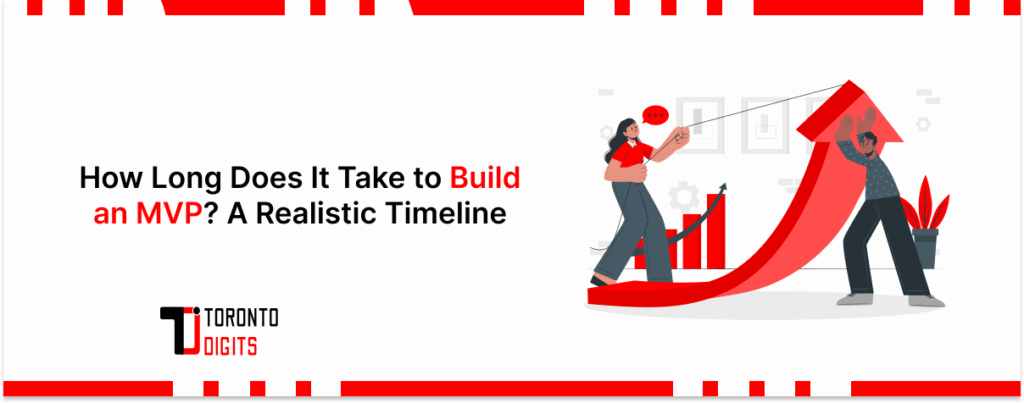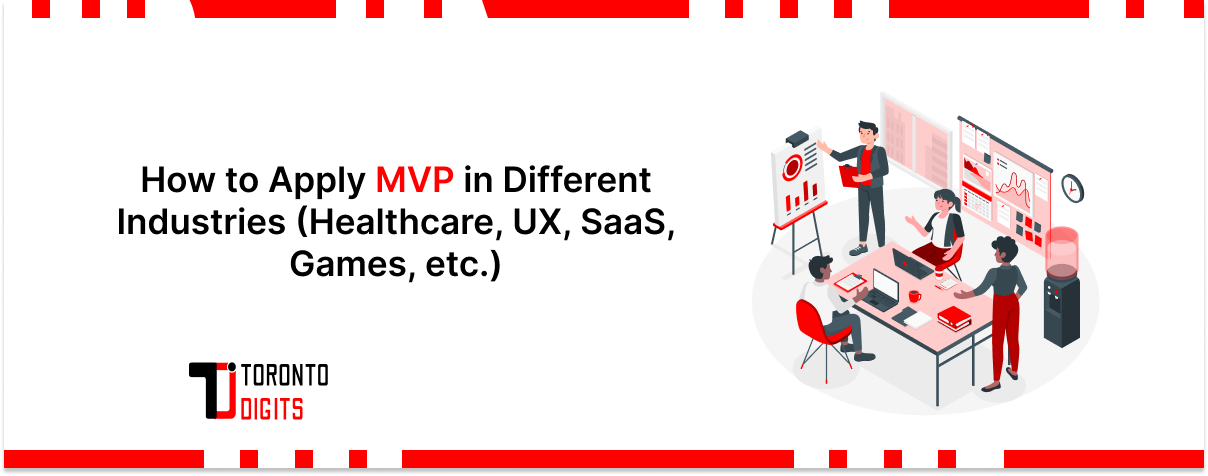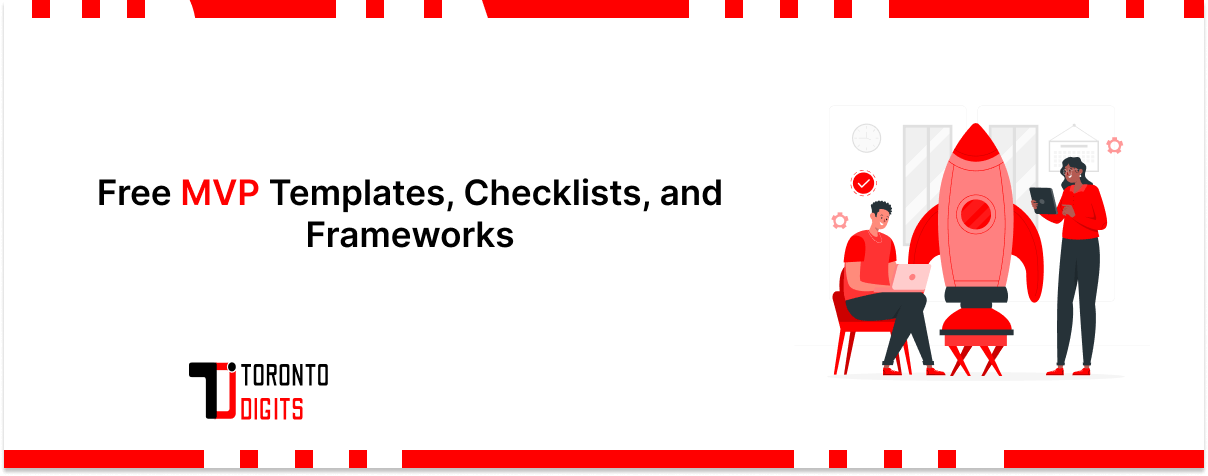In today’s fast-moving world, getting your product out there quickly can make all the difference. But while speed is important, you can’t afford to sacrifice quality or essential features.
That’s where a Minimum Viable Product (MVP) comes in. It’s the simplest version of your product that still solves a real problem for your users. It lets you test your idea with real people, without spending months (or years) perfecting every detail.
But building an MVP isn’t about rushing or cutting corners. It’s about being smart, focusing only on the must-have features that deliver value. So, the big question is: how long should it actually take to build an MVP?
The answer? It depends. The timeline can vary based on your product’s complexity, your team’s skills, and the overall project goals.
In this article, we’ll break down the typical stages of MVP development—from brainstorming and planning to launch and user feedback. You’ll get a clearer idea of how much time each phase might take, so you can plan better and launch faster, without compromising on what really matters.
Getting Your MVP Timeline Right
What’s the key to launching fast and keeping quality intact?
It all comes down to understanding your MVP timeline.
An MVP—Minimum Viable Product—is the simplest version of your product that still solves a key problem for your users. It includes only the must-have features, so you can get it into users’ hands quickly and start learning what works.
But how long should it take to build one?
The MVP timeline isn’t just about racing to launch. It’s a smart strategy. Launch too early, and your product might feel half-baked. Wait too long, and you could miss your shot in the market.
When managed well, your MVP timeline helps you strike the perfect balance—launching at just the right time with a product that’s functional, focused, and ready to grow based on real feedback.
Phase 1: Ideas & Planning
Every great product starts with a great plan—and that’s exactly what this first phase is all about. Think of it as setting the foundation before you build the house. Skip it, and you risk wasting time, money, and energy going in the wrong direction.
So, why is this phase so important?
It all begins with Market Research. This is where you dig into the market to understand what’s hot, who your competitors are, and whether people actually want what you’re planning to build. It’s your chance to spot gaps, find opportunities, and validate your idea before you commit.
Next comes User Persona Development. Here, you build out detailed profiles of your ideal users. Who are they? What do they struggle with? What solutions are they looking for? This step helps you make sure your MVP speaks directly to real users and solves a problem they actually care about.
Then, it’s time for Feature Prioritization. This is where you narrow down your ideas to the absolute must-haves. Instead of cramming in every cool feature, you focus only on what’s essential to meet user needs and support your goals. This keeps your MVP lean, clear, and purpose-driven.
Finally, you’ll create a Roadmap—your step-by-step plan for building and launching the MVP. Think of it like a GPS that keeps your team aligned, on track, and moving in the right direction.
Timeline? Typically, this planning phase takes about 1 to 2 weeks. If your idea is already well thought-out, you might finish sooner. But if your research uncovers more details to explore, taking the full two weeks is worth it. This upfront effort saves a lot of headaches later and sets you up for a smoother build.
Phase 2: Market Analysis & Business Planning
Before jumping into building your MVP, you need to understand the playing field. That’s what this phase is all about—knowing who your users are, what they need, and where your product fits in.
Market Analysis (5–7 days)
This step is your reality check. You take a closer look at your target audience, study your competitors, and spot trends in the market. The goal? Find out where the gaps are—and how your MVP can fill them better than anyone else.
Ask yourself:
What problems are people still facing? Can my product solve those problems in a simpler, smarter way?
This research usually takes around 5 to 7 days, depending on how deeply you dive into the data and how much clarity you already have about your niche.
Business Plan (2–5 days)
Once you know the market, it’s time to figure out how your MVP will make money. Will you charge a subscription? Add in-app purchases? Run ads? Whatever your approach, your business plan needs to clearly show how your product creates value and how that value turns into revenue.
You’ll also map out how your key features support your financial goals. This part usually takes 2 to 5 days, depending on how detailed your plan is and how quickly you can validate your model.
Taking the time to get these steps right ensures that your MVP doesn’t just meet market needs—it also sets your business up for real, sustainable success.
Phase 3: Design & Prototyping
Now comes the exciting part—turning your ideas into something real. The design and prototyping phase is where your MVP starts to take shape visually. Think of it like creating a blueprint before building a house. It’s not about polish just yet—it’s about clarity, direction, and usability.
Wireframing
First up: wireframes. These are simple, rough layouts that show where things will go on each screen. No colors, no fancy graphics—just structure. Wireframes help you figure out how users will move through your product and how everything fits together.
It’s all about function over form—focusing on user flow and making sure everything makes sense before you go deeper.
Prototyping
Next, you’ll build an interactive prototype. This is a clickable version of your product that looks and feels much closer to the real thing. It’s a powerful tool to test how users interact with your MVP, gather feedback, and make changes before development begins.
Think of it like giving your product a test drive—you can see what works and what needs fixing without writing a single line of code.
UI/UX Design
Once the structure and flow are locked in, it’s time to refine the look and feel. This is where you choose colors, fonts, icons, and design elements that bring your brand to life. But great design isn’t just about looks—it’s about creating a smooth, intuitive experience that users enjoy.
This entire phase usually takes about 7 to 10 days, depending on how complex your MVP is. A simple layout might wrap up faster, while detailed apps with lots of screens may take a bit longer.
No matter the scope, this step is well worth the time. A clean, user-friendly design sets the tone for everything that follows—and gives your development team a crystal-clear vision to build from.
Phase 4: Development
This is where the real magic happens. In the development phase, your MVP goes from being a set of plans and designs to an actual working product that users can click, tap, and explore. It’s the most hands-on stage—and one of the most exciting.
Backend Development
Before anything shows up on the screen, the foundation needs to be built. Backend development is all about setting up the systems that power your product: servers, databases, and the logic that makes everything work.
Think of it as the engine under the hood of a car. It handles things like saving user info, processing transactions, and keeping your app running smoothly behind the scenes.
Frontend Development
Now it’s time to bring your designs to life. Frontend development takes the visuals from the design phase and turns them into interactive, user-friendly screens. This includes everything your users see and touch—buttons, menus, forms, animations, and more.
Using tools like HTML, CSS, JavaScript, or frameworks like React and Angular, developers make sure your MVP looks great and works well on all devices.
Typical timeframe: Frontend development usually takes about 5 to 7 days for a basic MVP, depending on complexity.
Third-Party Integrations
Your MVP may also need a few “plug-ins” to fully function. This could be anything from a payment system like Stripe, to social login buttons (Google or Facebook), to analytics tools for tracking user behavior.
These integrations are like adding finishing touches—optional for some products, but absolutely essential for others.
Timeline & Tips
All in all, the development phase can take 4 to 8 weeks. The exact timeline depends on how many features you’re building and how complex they are. More advanced functionality or heavy customizations? Expect to lean toward the longer end.
The key here is balance. You want to move fast, but not so fast that you cut corners and end up with a buggy or unstable product. A solid MVP should be clean, functional, and ready for real users—but also flexible enough to grow and evolve with feedback.
This phase turns your blueprint into a product people can actually use—and that’s a huge milestone.
Phase 5: Testing & Quality Assurance
Now that your MVP is built, it’s time for a crucial step: testing and QA. This is where you make sure everything works as it should before real users get their hands on it. Think of it as your product’s final check-up before launch day.
Why Testing Is a Big Deal
Testing isn’t just about squashing bugs—it’s about making sure your product feels solid, reliable, and user-friendly. No one wants to launch a product that crashes, freezes, or confuses users. This phase helps catch problems early, so you can fix them before they hurt your brand or drive users away.
What Happens During Testing?
- Unit TestingYou test each small piece (or “unit”) of your product on its own. It’s like checking each Lego piece before building the full model.
- Integration TestingHere, you make sure all the parts of your MVP work well together. Kind of like making sure all the gears in a machine are turning in sync.
- User Acceptance Testing (UAT)Real users try out your MVP to see if it works in real life. This is your sneak preview of how people will actually use your product.
- Performance TestingHow fast is it? Can it handle lots of users at once? This phase puts your MVP under pressure to make sure it holds up when things get busy.
How Long Does It Take?
Testing and QA usually takes 1 to 2 weeks. If your MVP is simple, you might get through it quickly. But if it has lots of features or integrations, it could take a bit longer.
This phase is all about polishing your MVP so it’s launch-ready. A little extra time here can save you a lot of headaches later, and make sure your first users get the best experience possible.
Phase 6: MVP Launch & Real-World Feedback
You’ve built it—now it’s time to launch! But launching your MVP isn’t just about hitting the “publish” button and sitting back. It’s about getting your product in front of real users, seeing how they react, and using that feedback to make it even better.
What Happens in This Phase?
Soft Launch: Test the Waters
Start small. Release your MVP to a limited audience—early adopters, beta testers, or a niche group from your target market. This “soft launch” helps you catch any last-minute bugs and gauge user reactions before going full-scale. Think of it like a dress rehearsal before opening night.
Collect Feedback: Listen & Learn
Once people start using your MVP, pay close attention to their experience. Use tools like surveys, heatmaps, user interviews, and analytics to track behavior. What do they love? What’s confusing? What’s missing? This is gold—real feedback from real users.
Refine & Improve: Iterate Fast
Based on what you learn, it’s time to make changes. Maybe a feature isn’t being used the way you expected. Maybe your signup process is too long. Tweak, test, and update. This phase is all about quick iteration to improve your product.
How Long Does It Take?
The deployment phase usually takes 10–14 days. This includes the soft launch, collecting feedback, and making those first rounds of improvements. But remember—iteration never really stops. Great products are built with constant feedback and regular updates.
Don’t Forget Promotion!
Getting your MVP noticed is just as important as building it. Use:
- Landing pages
- Social media
- Influencer partnerships
to spread the word and attract users.
MVP deployment isn’t the finish line—it’s the beginning of a smarter, more user-driven development journey. Every piece of feedback brings you closer to a product that people love to use.
What Can Slow Down Your MVP Timeline?
Building an MVP can feel like a fast sprint, but sometimes, unexpected roadblocks turn it into a marathon. Here are a few common factors that can slow things down if you’re not careful:
Scope Creep: The “Just One More Feature” Trap
It’s tempting to keep adding cool features along the way, but every “just one more thing” adds time and complexity. This is called scope creep, and it’s one of the biggest reasons projects run late. Stay laser-focused on your MVP’s core purpose to avoid blowing up your timeline (and budget).
Technical Surprises: The Hidden Time Wasters
Sometimes, things don’t go as planned. Maybe a third-party tool doesn’t integrate smoothly, or you run into bugs that take hours or days to fix. These behind-the-scenes issues can sneak up on you and drag development out longer than expected.
Compliance & Regulations: Slower but Necessary
If your MVP deals with sensitive data (like in healthcare or finance), meeting legal standards like GDPR or HIPAA can take extra time. These regulations aren’t optional, and handling them right means digging into fine details and double-checking everything. It’s worth it—but it does take time.
How to Stay on Track
The best way to avoid delays?
- Stick to your MVP’s core goals
- Plan for potential hiccups early
- Keep communication clear across your team
Being prepared for bumps in the road makes it easier to stay focused and finish strong.
Wrapping It Up
Creating a successful MVP isn’t just about speed—it’s about smart planning and thoughtful execution. Sure, you want to move quickly, but rushing can lead to costly mistakes. The goal is to build something lean, high-quality, and flexible enough to grow.
Take the time to plan out each phase carefully. Think of your MVP as a launchpad—not the final product, but a strong first step. And if the process starts to feel overwhelming, don’t hesitate to bring in experts who can guide you in the right direction.
With the right mindset and strategy, your MVP won’t just get to market fast—it’ll make an impact, connect with users, and set the stage for long-term success.




